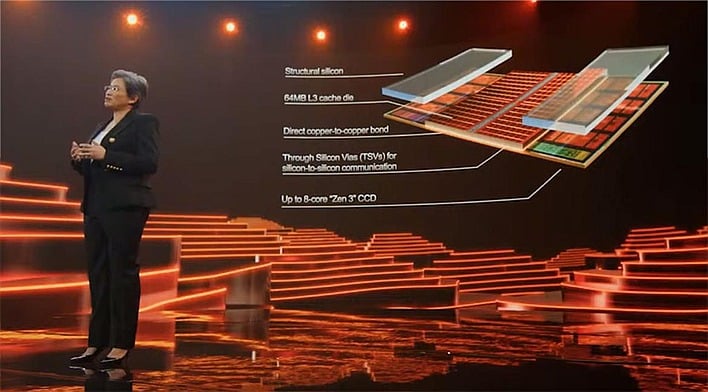AMD Stacked 3D V-Cache Could Be Headed To Gaming GPUs After Zen 3 Ryzen Refresh
Soon, AMD's doubling down on that play with refreshed Ryzen CPUs bearing 3D stacked cache, known to date as "3D V-Cache." The concept is simple: AMD is literally piling on extra last-level cache using vertically stacked dice. The upcoming "Zen 3+" refresh will be fundamentally the same CPUs as in the extant Ryzen 5000 series, just with each 8-core Core Complex Die (CCD) bearing an extra 64MB of cache on top, for 96MB on single-CCD parts, and a whopping 192 MB of L3 cache on dual-CCD parts. The closely-related EPYC Milan-X CPUs are getting the same treatment, too, and their 8 CCDs end up stacking up a total of 804MB of L3 cache.

Does this automatically mean that we're going to be seeing 3D V-cache appear on discrete graphics products? Well, no, not necessarily. Even though the filing specifically mentions "graphics cards" in addition to numerous instances of "GPU," AMD could simply be filing the trademark now in case it decides to do such a thing in the future.
With that said, the latest rumors indicate that AMD's next-generation flagship Radeon parts will have an absolutely enormous amount of "Infinity Cache"—up to 512 MB, if the leakers are legit. Adding on that much cache to a monolithic part would make the die extremely large, while using a stacked V-cache die could help keep the maximum die size down while still reaping the benefits of a large cache—benefits we observed ourselves back when the RX 6800XT launched.
It makes sense, but will it come to pass? All we can do is wait and see.


